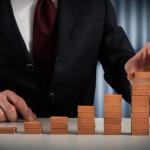The challenges of running a modern business get tougher and tougher. Mainly externally driven challenges including...
 In order for a company to exist, it must organize itself in a way that fulfills its value proposition because a value proposition has enormous power.
In order for a company to exist, it must organize itself in a way that fulfills its value proposition because a value proposition has enormous power.
So, how can a company organize itself? The answer is with a budget.
A Company and Its Value Proposition
Many years ago I toured the facilities of a manufacturing company. The reason for the tour was a colleague who was advising the company’s president wanted me to see lean thinking up close. My primary takeaway from the tour is not the company’s lean thinking but its value proposition.
The company’s value proposition is “same day, next day” which means product would be shipped the day of or day after an order was placed. This value proposition represents an opportunity to not only exist but also organize.
Organizing the Value Proposition
Organizing the value proposition of “same day, next day” begins with the answer to this question:
How can the company fulfill “same day, next day?”
The answer is to create, promote, distribute, and support “same day, next day.”
Creating, promoting, distributing, and supporting what a company sells are tasks that accountants communicate through financial statements. Financial statements, therefore, represent the continuation of organizing a budget around a value proposition. The continuation will lead to organizing a budget.
Organizing a Budget
Organizing a budget focuses on three financial statements: income statement, balance sheet, statement of cash flows. The reason these financial statements are listed in this order applies to the order that they are prepared.
An income statement is prepared first because of net income. Net income is more than the difference between revenues and expenses, it is earnings retained by a company. Retained earnings is an element of stockholders’ equity and stockholders’ equity is an element of a balance sheet. Since a balance sheet contains stockholders’ equity and stockholders’ equity contains retained earnings and retained earnings contains net income an income statement must be prepared first.
A balance sheet is prepared second because of cash. Cash is not only a store of value but also a medium of exchange meaning that cash is received as well as disbursed. The receipt and disbursement of cash applies to items on an income statement as well as a balance sheet.
A statement of cash flows is prepared third because of activities:
- Operating activities (e.g. net income, changes in current assets and current liabilities)
- Investing activities (e.g. changes in long-term assets)
- Financing activities (e.g. changes in long-term liabilities and stockholders’ equity)
The inclusion of net income and changes to balance sheet items indicate something must occur before a statement of cash flows is prepared; the something is the preparation of an income and a balance sheet.
The descriptions in the previous paragraphs represent a reminder of the financial statement process. The reminder is to keep the organization of a budget intact. This simplifies the connection to a value proposition.
Difficulty in connecting a budget to a value proposition can cause problems that are difficult to overcome. Difficulty in overcoming the biggest problem, going out of business, can be minimized by organizing a budget around a value proposition.
Organizing a Budget around a Value Proposition
Step 1: use elements of an income statement
These elements will represent a framework for organizing thoughts; remember, a budget expresses thoughts with numbers. The connection from organization to expression is important. Its importance will be the reminder of how the company will fulfill “same day, next day” value proposition. What will the income statement express?
An income statement will express how “same day, next day” will be fulfilled by using:
- Cost of goods sold to express how “same day, next day” will be created
- Selling expenses to express how “same day, next day” will be promoted and distributed
- Administrative expenses to express how “same day, next day will be supported
Step 2: use elements of a balance sheet
The elements of a balance sheet will represent an extension of thoughts organized by an income statement. An income statement organizes thoughts on how to create, promote, distribute, and support “same day, next day.” What will be used on a balance sheet to extend the thoughts from an income statement is assets. The assets to be considered include:
- Receivables
- Inventories
- Fixed Assets
- Intangible Assets
The assets under consideration present an opportunity for two-way thinking:
- How these assets can affect cost of goods sold, selling expenses, and administrative expenses.
- How these assets can affect cash flows.
It is the second way of thinking that leads us to the third financial statement, the statement of cash flows.
Step 3: use cash flow statement
The statement of cash flows can help us think about how “same day, next day” will be fulfilled by
- Raising money
- Acquiring long-term assets
- Conducting relationships
An expansion of this section will appear in the next article titled “Thinking Broadly vs. Narrowly about a Budget.”
Conclusion
Fulfilling a value proposition may happen without thinking but that’s not a way for companies to exist over the long-term. Organizing thoughts about how to exist can be easy, and the ease is in process. First, we need to understand a value proposition and then organize a budget around it.
Subscribe to
FP&A Trends Digest

We will regularly update you on the latest trends and developments in FP&A. Take the opportunity to have articles written by finance thought leaders delivered directly to your inbox; watch compelling webinars; connect with like-minded professionals; and become a part of our global community.






